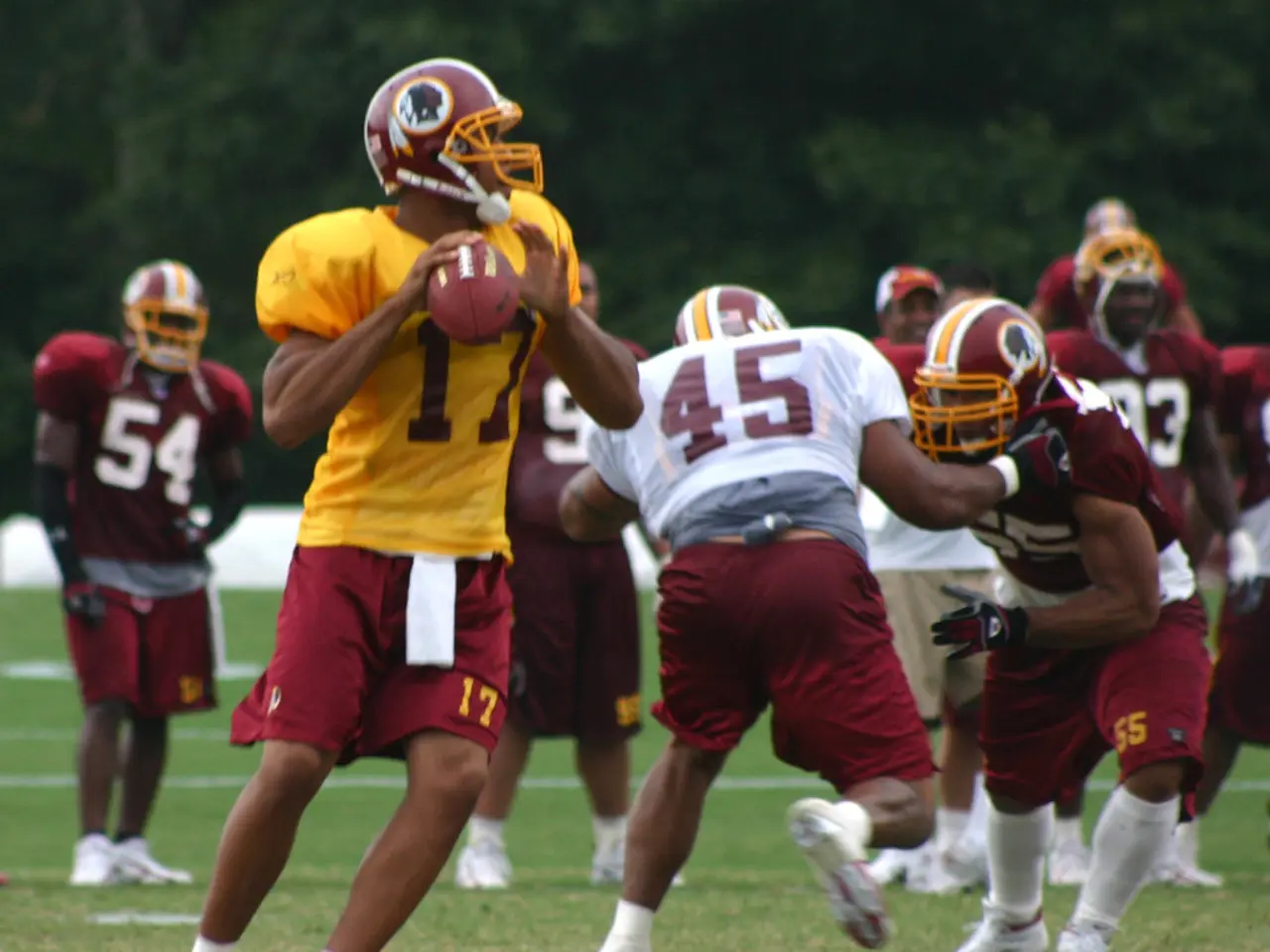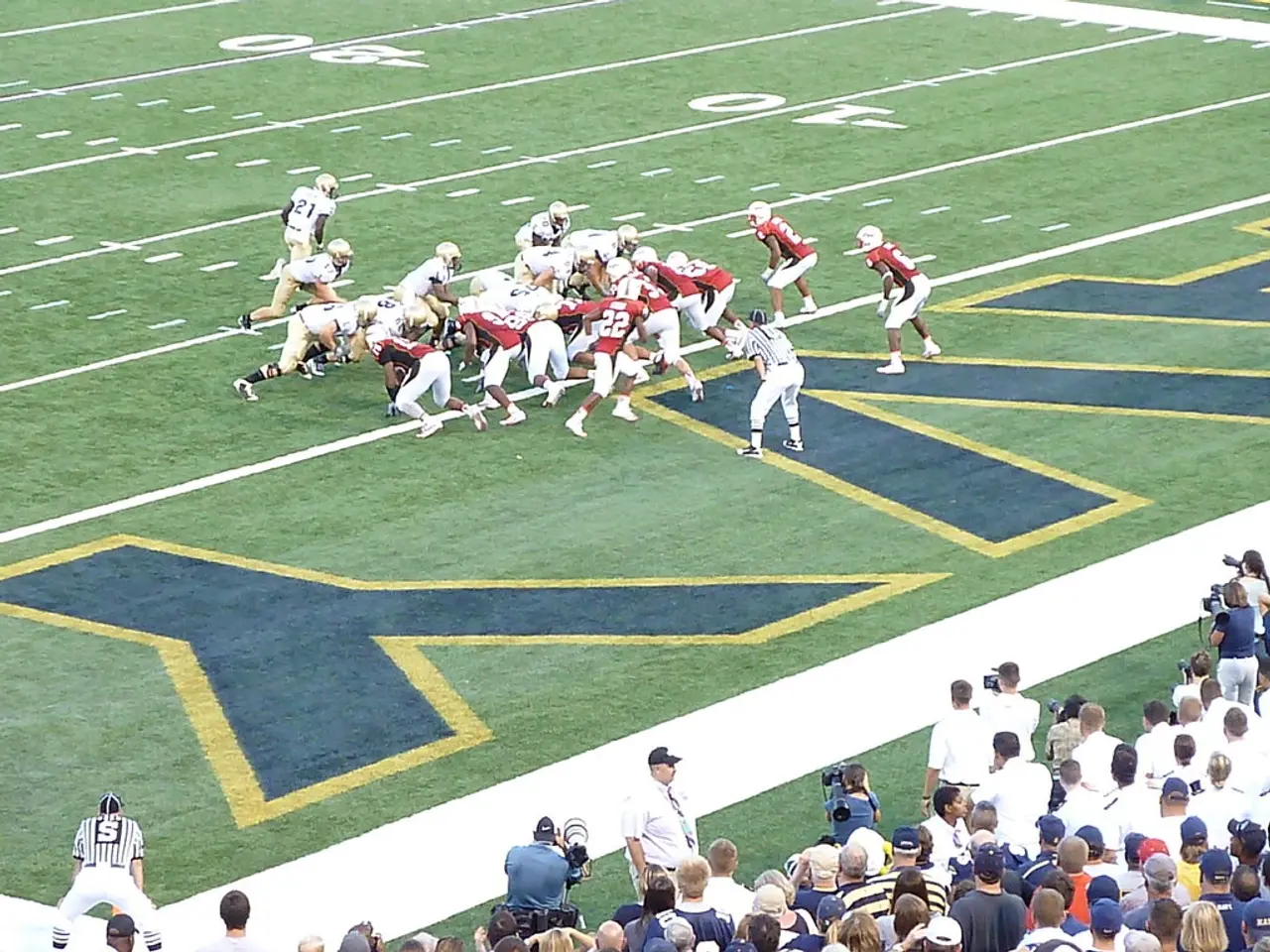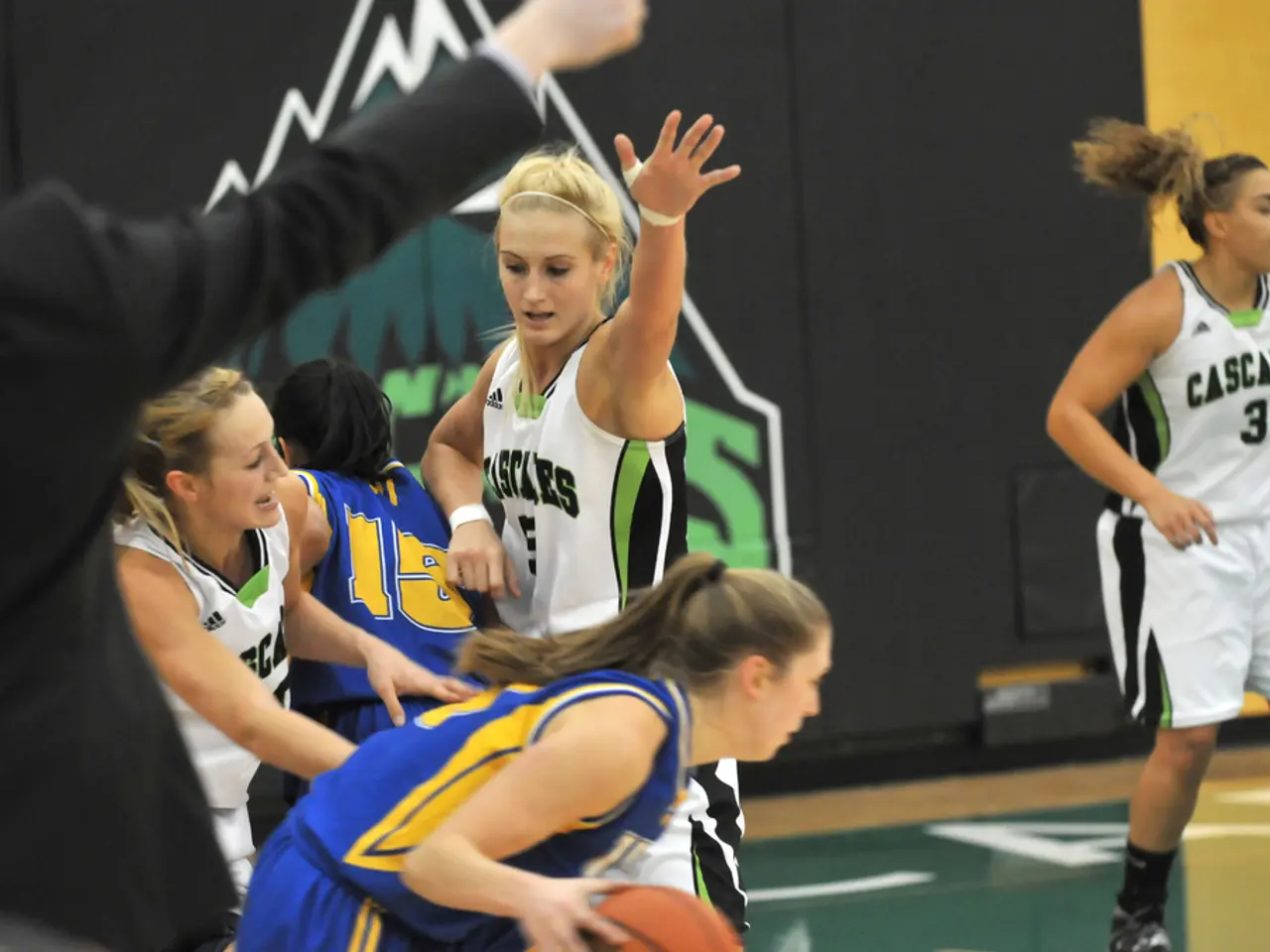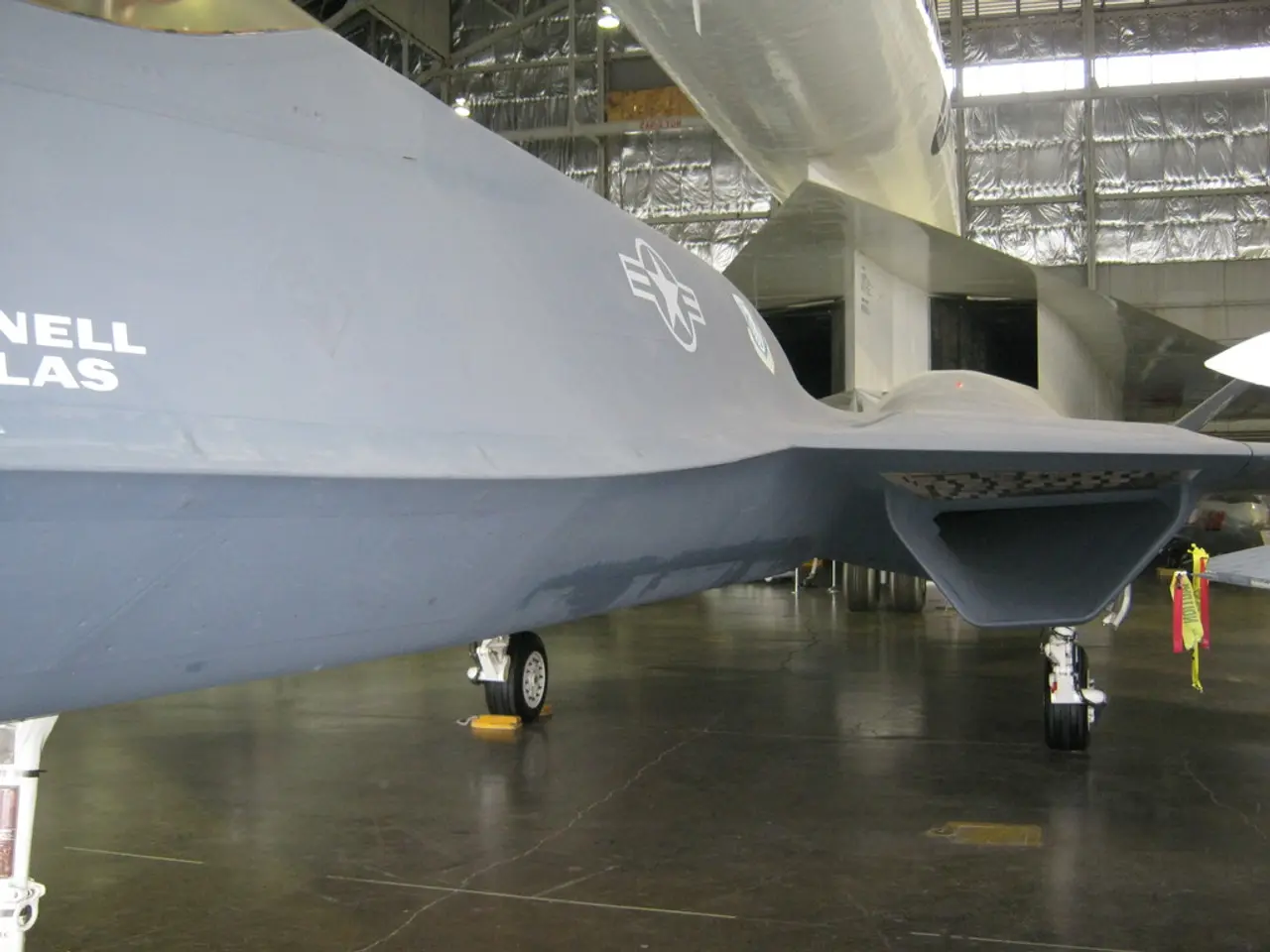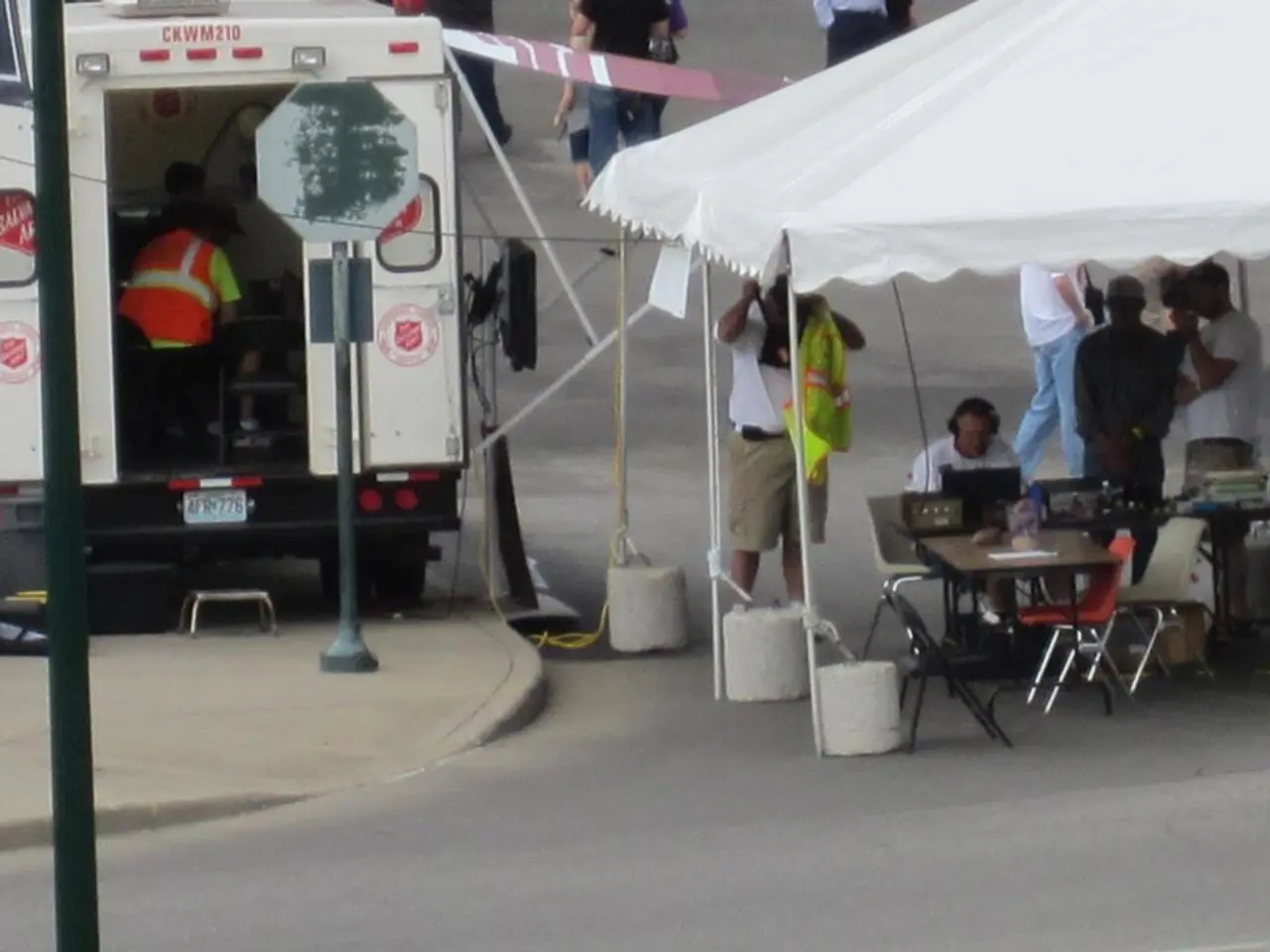American Football Explained: The Rules and Mechanics Governing the Game
In the thrilling world of American football, the playing field is a crucial element that sets the stage for the intense competition. Most fields are covered in grass, but some stadiums opt for artificial turf. Regardless of the surface, the standard professional American football field follows specific dimensions and rules.
The field is rectangular, measuring 120 yards (360 feet) in length, including two 10-yard deep end zones. The width is 53 1/3 yards (160 feet), covering an area of approximately 1.32 acres.
Key features include a 100-yard-long playing field between the goal lines, 10-yard deep end zones at both ends, and a width of 53 1/3 yards. The field is marked with yard lines every 5 yards, numbered every 10 yards, and hash marks that align for NFL or college standards.
The end zones are marked by goalposts, positioned at the back and centered on the width. The end zone is a 10-yard-wide area at each end of the field, with a goal line separating it from the field. Each end zone has pylons and goalposts, with an 18-foot, 6-inch cross bar and upright posts that rise to a height of 30 feet.
The field's dimensions and characteristics are standardized for professional leagues like the NFL and collegiate play. The officiating crew, consisting of six men with distinct responsibilities, oversees the game.
Reviewable plays include scoring plays, pass completions or incompletes, out-of-bounds catches, recoveries of loose balls, illegal passes, quarterback incomplete forward passes or fumbles, runner down-by-contact rulings, touches of a kick, and number of players on the field.
In the instant replay system, coaches can challenge an official's call, and each team is allotted two challenges per game. Penalties, such as clipping, chop block, encroachment, excessive crowd noise, fair catch, intentional grounding, leaping rule, tuck rule, "Emmitt Smith" helmet rule, and number of players on the field, can be called during the game.
At the beginning of each half and after the other team scores, a team receives a kickoff. A turnover can occur when a team recovers a ball dropped by the other team (fumble) or picks off a ball thrown by the other team's quarterback (interception).
On third down, if the offensive team fails to advance the ball 10 yards, they may choose to punt the ball to the other team. If the offensive team does not punt on fourth down, they must reach the 10-yard mark or surrender the ball to the other team.
After scoring a field goal or touchdown, a team can kick a field goal for an extra point or attempt to run or pass the ball into the end zone for a two-point conversion. The official NFL football used in games is handmade by Wilson Sporting Goods Co., with specific dimensions and materials to protect the bladder and help the football keep its shape.
A safety is awarded to a team when a player is tackled in his own end zone, and a team scoring a safety gets the ball on a free kick. A touchdown is scored when any part of the ball reaches the edge of the opponent's end zone. The line of scrimmage, an imaginary line that runs across the field, is the starting point for the offensive team on each play.
In the down-and-distance system, a team is given four downs, or attempts, to move the ball 10 yards. The field has a gridiron pattern of yard lines and hash marks every 5 and 10 yards, making it easier for players and officials to determine the position of the ball and the line of scrimmage.
The standard dimensions of the American football field, commonly seen in professional leagues like the NFL and collegiate play, are 120 yards in length and 53 1/3 yards in width. Key features include a 100-yard-long playing field, 10-yard deep end zones, and definite markings such as yard lines, hash marks, and goalposts. In football, an end zone is a 10-yard-wide area at each end of the field, where goal posts are positioned and pylons are placed.
